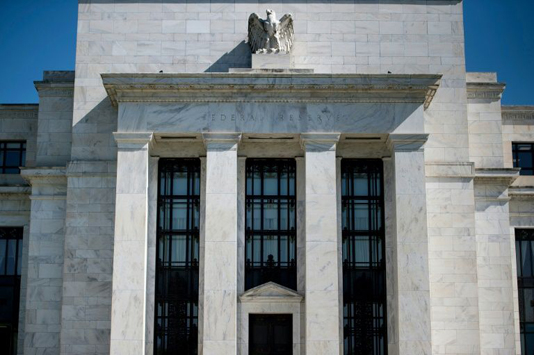WASHINGTON, Sept 5, 2019 (BSS/AFP) – The US economy grew at an
unspectacular pace in recent weeks, while businesses still took a rosy view
of the near future despite the escalating US-China trade war, the Federal
Reserve said Wednesday.
But Fed still drew a spotty portrait, pointing to an array of softening or
deteriorating conditions just as concrete signs emerge that the trade
conflict is weighing on growth.
“Although concerns regarding tariffs and trade policy uncertainty
continued, the majority of businesses remained optimistic about the near-term
outlook,” the central bank said in nationwide survey of economic activity.
Though disagreements remain, policymakers are widely expected to cut
interest rates again in two weeks to insulate the United States from the
weakening global economy and mounting fears of economic damage wrought by
President Donald Trump’s trade wars.
The Fed cut rates last month for similar reasons, marking the first
downshift for monetary policy in a decade.
The latest “beige book” survey, which gathers anecdotal reports from
business people and other contacts in the Fed’s 12 districts, said growth had
continued “at a modest pace.”
– Sharp deterioration –
The report may not have reflected all of last month’s sharp deterioration
in the trade conflict with Beijing, as research concluded on August 23, just
as Beijing and Washington announced fresh increases on hundreds of billions
of dollars in two-way trade.
According to the Fed, anecdotal reports say auto sales rose and tourism
was “solid,” while bank lending and commercial real estate leasing both
increased a little.
Elsewhere, however, things were less than stellar.
Farms were beset by a trio of woes: bad weather, low prices and
uncertainties from America’s trade wars.
Meanwhile, consumer spending — the sole strong point in the US economy —
was “mixed” outside the auto sector, demand for transportation softened, home
sales “remained constrained” and housing construction was flat.
Across the nation, employers complained they had difficulty finding
workers to fill open positions and faced “strong upward pressure” to offer
higher pay to entry-level and low-skill workers.
Elsewhere, employers upped benefits and other deal sweeteners, such as
more flexible work arrangements and signing bonuses, according to the report.
But inflation remained tame. While some companies said they were able to
pass on price increases, manufacturers complained there were limits on how
much they could do so.
“District reports on the impact of tariffs on pricing were mixed, with
some districts anticipating that the effects would not be felt for a few
months,” the report said.



